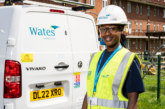The hands-on aspect of building maintenance, repairs and safety inspections are not typically associated with digital transformation. Fixing problems and quality checks rely on in-person expertise and onsite experience, which is not always possible to replicate remotely. Although this remains the case in a post-pandemic world, John Doyle, CEO of public and third sector technology provider Voicescape, explains how digitisation is evolving housing maintenance and safety services.
Social distancing has encouraged many different industries and organisations to think differently. They’ve had to face the challenge of delivering services, while safely managing human interactions between staff and customers. This has promoted new ways of managing gas and electrical safety inspections and maintenance work, with local authority landlords showing how challenges can be turned into opportunities to improve efficiencies, as well as resident satisfaction.
Maintaining the safety and standards of houses is a top priority for social landlords. Tenant welfare and respect are high on the Government’s agenda and the quality of homes is increasingly subject to ever-closer scrutiny and tighter regulation. As a result, local authorities will work extensively to complete robust programmes of housing maintenance and safety checks. Despite this, they still risk falling short of regulatory requirements because of a factor they have little control over — resident availability.
Social landlords face a tough task of ensuring they can access resident homes to complete works and checks. To overcome the problem of no access to homes, social landlords have tended to adopt either a prescriptive approach or a more consultative method to arranging appointments.

A postcode-led approach
The prescriptive approach sees social landlords organise appointments for housing maintenance according to postcode. This is a logical method that can prove advantageous, especially for a local authority, which may have homes spread across a large area. Systematically scheduling appointments according to geography is designed to optimise the movement of engineers, increasing the time they have to physically deliver services, rather than this being used for travel between properties. The approach can be disadvantageous though, as it’s less resident-focussed.
Tenants will often be informed via letter or a text message about the date an engineer will be in their area and an approximate time they will visit their home. The emphasis is on the resident to make themselves available — a system that does not always work if a tenant has other plans or forgets about the proposed visit. This leads to missed appointments resulting from no access, meaning the social landlord must attempt to reorganise the appointment. The intended efficiencies are quickly lost and there’s still little guarantee that a resident will make themselves available for the revisit.
Arguably, people working from home during lockdowns should have made this approach more effective. Unfortunately, as the method relies on one-way communication to residents, it does not allow for discussion of any resident concerns about other people entering their home and COVID-safety. People being at home more during lockdown still does not guarantee engineer access.

Less prescriptive, more consultative
The consultative method allows for resident feedback, but can prove time and labour intensive. As the name suggests, this method involves consulting with residents to find a time and date that suits them for an engineer to visit. The notion being that investing more time in arranging the appointment will reduce the possibility of no access, saving the time and costs of rearranging visits and engineers having to return to addresses.
Decentralised teams caused by working from home has made this approach more time and cost intensive. People working in different places can add another layer of coordination. There’s also the consideration that this approach can lead to fragmented engineering schedules, with appointments organised according to resident preference, rather than the most efficient travel route for engineers.
The best of both worlds
Rethinking the pros and cons of each approach during the pandemic has seen social landlords embrace a trend of digital transformation, which combines the efficiencies and effectiveness of each method. Automated calls are scheduled to contact tenants, which provide them with a proposed time and date for an appointment. The resident then has the option to press a button to confirm the appointment or to be connected with an advisor to make alternative arrangements that are more convenient for them.
Automated calls can be scheduled according to postcodes, meaning routes can be more effectively planned to be as efficient as possible, whilst the resident engagement during the call minimises the possibility of no access appointments on these routes. The opportunity for tenants to speak with advisors also helps to address any social distancing and COVID-compliance concerns that residents may have.
Call automation can reduce the time and staff resources associated with making outgoing calls, freeing-up advisor time to help residents that require support. The systematic logging of automated calls can also be used to create comprehensive audit trails, which support compliance requirements, as well as for scheduling appointment reminders that further reduce the volume of no access visits.
We believe that this digital evolution of organising maintenance visits and gas and electrical safety inspections can improve operational efficiencies by as much as 60%, while driving up the rate of completed visits by 150%. Minimising no access appointments will not only save social landlords time and enhance compliance, it will also help dedicate more time and resources to supporting residents, boosting both standards and satisfaction.









